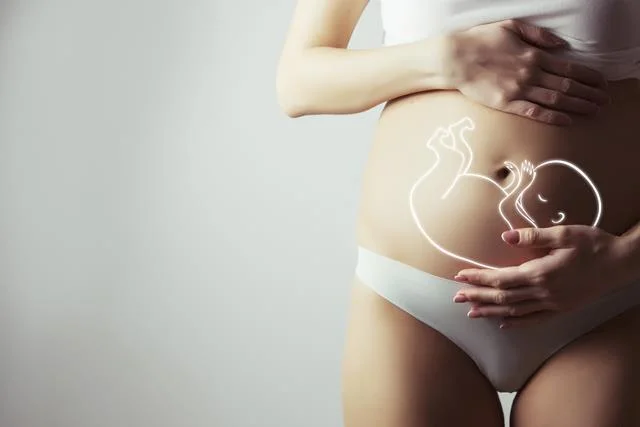Cholestasis in pregnancy is a disturbance of bile flow in the duodenum. As a result, metabolic products are not excreted and accumulate in the body. This can lead to many complications, especially in the fetus.
Cholestasis in pregnancy is a complication in the course of pregnancy that is most dangerous for the fetus. The term cholestasis refers to the stagnation of bile associated with both abnormalities of bile transport to the bile duct and its accumulation in the liver cells. Cholestasis in pregnancy belongs to the so-called intrahepatic cholestasis, which is caused by abnormal bile excretion at the level of hepatocytes. It occurs in about 4% of all pregnant women. Typically, symptoms of cholestasis during pregnancy appear around 30 weeks of gestation. The most common complaint is skin itching without a rash. If you notice such a symptom, please report it to your health care provider right away.
Causes of pregnancy cholestasis
Knowing what gestational cholestasis is, it is worthwhile to know its causes and its development. The direct cause is stagnation of bile in hepatocytes, which causes high concentration of bile acids in blood serum. Knowing what gestational cholestasis is, it is worth knowing its causes and drainage. The direct cause is the stagnation of bile in hepatocytes, which causes a high concentration of bile acids in the blood serum.
Cholestasis in pregnancy occurs as a result of increased susceptibility of liver cells to sex hormones (estrogen and progesterone). Symptoms increase around the 30th week of pregnancy, which is related to the highest concentration of hormones during this period. Disorders of secretion in the intrahepatic bile ducts may be related to diet or may be genetic. However, the most important factor leading to cholestasis is excessive susceptibility of hepatocytes to sex hormones, whose highest activity is in the third trimester of pregnancy.
Symptoms of cholestasis in pregnancy
Cholestasis is usually mild and its symptoms are usually not dangerous for the mother, but significantly worsen her mood. When cholestasis occurs during pregnancy, the symptoms usually appear in the third trimester. The most characteristic symptom is skin itching, which is not accompanied by a rash. Initially, it covers the hands and feet, then other areas of the body. Due to the persistent itching and scratching, the skin shows so-called ligatures, i.e. linear abrasions with damage to the epithelium. Symptoms are often accompanied by irritation, anxiety and sleep disturbances. About 1-4 weeks after itching, jaundice, i.e. yellowing of the skin, eye proteins and mucous membranes of varying intensity, occurs. In addition, symptoms may include nausea, vomiting, and liver enlargement. The symptoms of cholestasis gradually disappear after birth and usually disappear within three weeks after the birth of the child.
Test results of cholestasis in pregnancy
Most important for confirming the disease are blood test results, including so-called liver tests. The parameters inform the doctor about the condition of the hepatocytes and how far the disease has progressed. Based on these, the doctor decides on treatment and possible hospitalization.
Cholestasis diet during pregnancy
Since the disease is caused by a malfunction of the liver cells, an additional load on the liver cells should be prevented. Such load is caused mainly by foods rich in large amounts of fats. A diet with cholestasis during pregnancy should be based on cooked and baked dishes with a high content of vegetables and fruits. Highly processed foods with a high sugar content and sweetened carbonated drinks should also be excluded from the diet.
Treatment of cholestasis in pregnancy
The diagnosis of cholestasis in a pregnant woman is usually associated with the need for hospitalization in the department of pregnancy pathology and the choice of appropriate pharmacotherapy. Treatment of gestational cholestasis consists in the use of preparations primarily intended to relieve bothersome symptoms and prevent complications of the disease. The most common symptom is itching, which is treated with cholestyramine and antihistamines.Diagnosis of cholestasis in a pregnant woman is usually associated with the need for hospitalization in the department of pregnancy pathology and the choice of appropriate pharmacotherapy. Treatment of gestational cholestasis consists in the use of preparations primarily intended to relieve bothersome symptoms and prevent complications of the disease. The most common symptom is itching, which is treated with cholestyramine and antihistamines.
Cholestasis is the cause of abnormal liver function, which impairs the synthesis of blood clotting factors. This can lead to bleeding: from the nose, oral cavity, from the wound after a cut, but also (in extreme cases) to internal bleeding, including into the brain. To minimize the effects and prevent bleeding, vitamin K is used.
Although the unpleasant symptoms significantly complicate the life of the expectant mother, the disease (detected and treated early enough) does not pose a great danger to her. The greatest dangers, including the possibility of malformations and even intrauterine death, involve the fetus. For this reason, it is important to pay attention to the characteristic symptoms, as this allows early detection of the disease, appropriate treatment and monitoring of the child.










